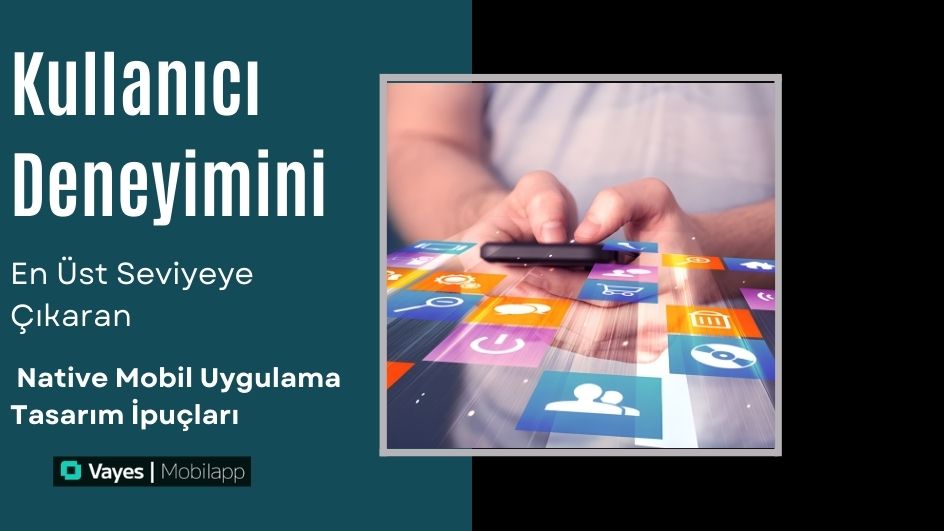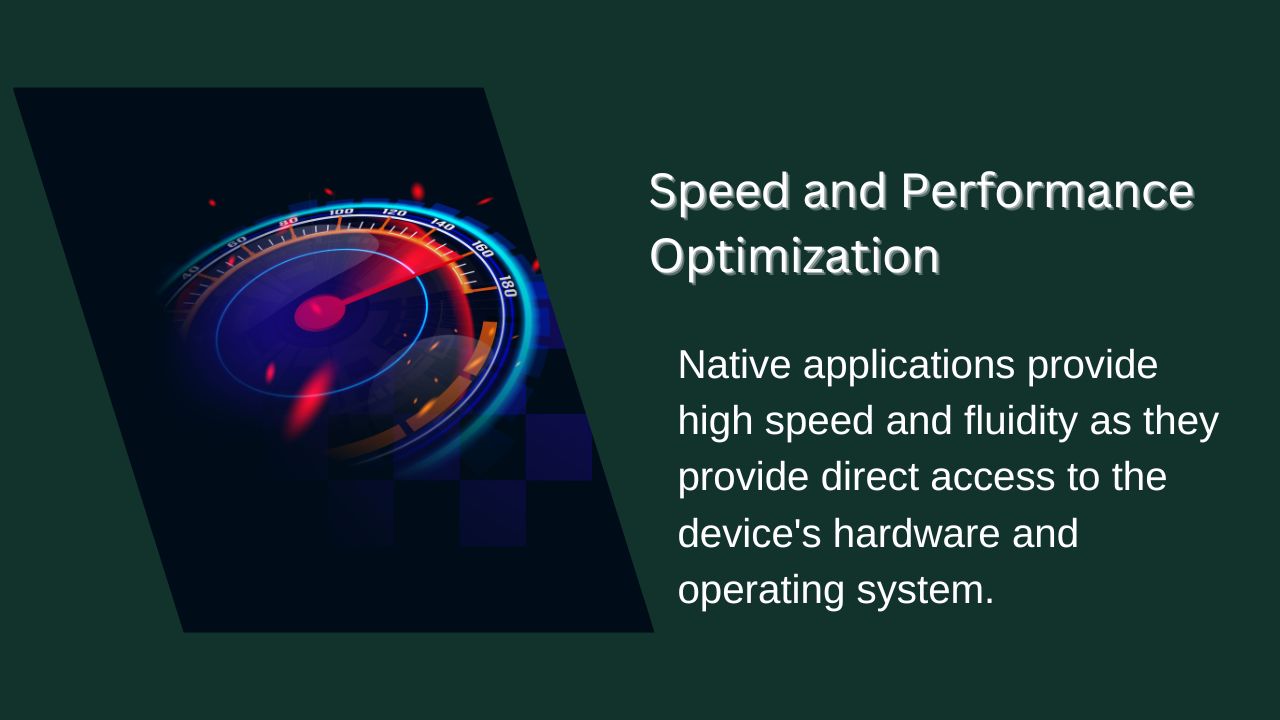Hello,
How Can We Help You?
Contact Form
Fill out the form and we will contact you as quickly as possible.
|

Native mobile app design refers to the process of creating applications for a specific platform using that platform's design standards and technologies. Apps developed for iOS using Swift or Objective-C, and for Android using Kotlin or Java, aim to maximize user experience Native apps leverage the platform's hardware and software capabilities to deliver a seamless and intuitive experience to users. For instance, iOS apps are designed according to Apple’s Human Interface Guidelines, while Android apps follow Google’s Material Design principles. Platform-specific design ensures that users interact with interfaces they are already familiar with, reducing the learning curve. Performance optimization and visual aesthetics are core components of native design. This design approach makes it easier for users to navigate the app and fosters trust in the brand. Additionally, native apps can quickly adapt to platform updates, ensuring long-term user satisfaction.
Platform-specific design is a cornerstone of native mobile app design and directly impacts user experience Both iOS and Android platforms have their own unique design guidelines. iOS users expect a minimalist and fluid interface, while Android users often prefer a more flexible and customizable experience. For example, in iOS, the navigation bar is typically placed at the top of the screen, whereas in Android, it may appear at the bottom or on the sides. Native mobile app design adapts to these differences, allowing users to engage with interfaces they’re accustomed to. iOS apps, adhering to Human Interface Guidelines, offer a clean and organized design, while Android apps, following Material Design principles, provide a more dynamic look. Performance optimization is also enhanced by this alignment, as platform-native components improve the app’s speed and fluidity. When users encounter a design that feels platform-native, they perceive the app as more intuitive, which positively influences their overall user experience
Simplifying the user interface is critical in native mobile app design to elevate user experience to the highest level. Complex interfaces can overwhelm users and make the app difficult to use. Therefore, a simple and intuitive approach should be adopted in the design process. For instance, instead of cluttering the interface with unnecessary buttons or complex menus, the design should focus on core functionalities. Users should have quick access to the most frequently used features, and the navigation flow should feel natural. Platform-specific design guidelines serve as a roadmap for this simplification process. For example, using a native date picker in iOS or a swipe menu in Android provides interactions that users are already familiar with. Additionally, visual hierarchy should be used effectively to highlight important information. Performance optimization complements a simplified interface, as a less cluttered design enables the app to run faster. A streamlined interface allows users to navigate the app more comfortably, ultimately increasing their satisfaction.

Performance optimization is a key factor in native mobile app design that directly affects user experience Native apps have the advantage of direct access to the device’s hardware and operating system, enabling high speed and smoothness. However, the design process must carefully preserve this advantage. For example, large images or unnecessary animations can slow down the app. Therefore, images should be optimized, and animations should only be used when necessary. Additionally, data loading times should be minimized. For instance, in a news app, the homepage should initially display only essential content, with additional details loaded in the background. Platform-specific design tools aid in this optimization process. iOS uses Metal, while Android leverages Vulkan, both of which are graphics frameworks that enhance performance. A fast and fluid app increases user satisfaction and encourages consistent usage.
In native mobile app design visual aesthetics and brand consistency are vital elements that enhance user experience Visual aesthetics shape the first impression users have of the app. Therefore, the color palette, typography, and icons should be carefully selected. For example, a healthcare app might opt for calming and trustworthy colors. Platform-specific design principles should be harmonized with visual aesthetics. iOS might favor a minimalist design, while Android could incorporate more vibrant colors, but in both cases, the brand’s identity must remain consistent. Brand consistency ensures that users associate the app with the brand. For instance, the app’s logo, colors, and typography should align with the brand’s other channels. When performance optimization is combined with visual aesthetics, users experience an app that is both visually appealing and fast. This consistency fosters trust in the brand and encourages users to engage with the app regularly.
Evaluating user feedback is essential in native mobile app design to elevate user experience to its highest potential. Users provide the best insights into the app’s strengths and weaknesses. Therefore, in-app feedback collection tools should be integrated. For example, a survey form or star rating system can allow users to share their opinions. Additionally, reviews on app stores should be regularly analyzed. Users often report issues such as long loading times, complex navigation, or bugs. These insights guide the design process and enable improvements to the app. Platform-specific design helps in applying this feedback, as each platform’s user base has different expectations. Performance optimization is also supported by user feedback. For instance, if users complain about the app being slow, improvements can be made in that area. A user-centric design approach increases satisfaction and enhances the app’s overall success.
In native mobile app design accessibility and inclusivity principles are crucial to ensuring user experience reaches a broad audience. Accessibility ensures that users with disabilities can use the app comfortably. For example, screen reader support should be added for visually impaired users. iOS offers VoiceOver, while Android provides TalkBack, both of which are native accessibility tools that assist in this regard. For users with color blindness, color contrast should be carefully chosen, and information should not rely solely on color cues. Additionally, font sizes should be adjustable, allowing users to enlarge text as needed. Platform-specific design supports accessibility features, as each platform’s native tools are optimized for such needs. Performance optimization ensures that an accessible design runs smoothly. Inclusivity principles ensure the app appeals to users from different cultures and age groups. For instance, adding language options can help reach a global audience. An accessible and inclusive design engages more users and boosts satisfaction.
Native mobile app design continues to evolve with technological advancements. Technologies like AI, augmented reality, and 5G are shaping the future of native design. For instance, AI can analyze user behavior to offer personalized interfaces. Augmented reality apps, designed natively, can fully leverage the device’s camera and sensors. Performance optimization ensures these technologies function seamlessly. With 5G, data transfer speeds increase, allowing native apps to provide more real-time experiences. For example, in a healthcare app, patient data can be shared instantly with a doctor. Platform-specific design ensures these innovations are implemented optimally on each platform. Features like voice assistants and gesture-based navigation are also becoming more common in native design. To maximize user experience native design will continue to integrate these technologies, maintaining a user-centric approach. These advancements will keep enhancing user satisfaction in the mobile app landscape.
Contact Form
Fill out the form and we will contact you as quickly as possible.
 Notification Center 00:00
Notification Center 00:00